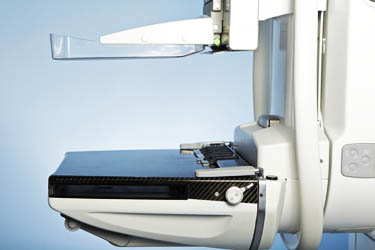New Study Adds to the Confusion Over Mammograms
After analyzing medical records of women who died of breast cancer, researchers at Harvard University concluded that early mammograms can save lives. Other experts disagree. What should women do?

A new study from researchers at Harvard University is adding to the confusion and disagreement over when and how often women should get mammograms. The study suggests that women who are screened for breast cancer earlier and more often have a greater chance of surviving the disease should they get it than those who did not get mammograms until later in life. Though these researchers see this as cause to conclude that women should get regular mammograms beginning in their 40s, others are critical of the new study and see no reason to change the current guidelines.
Researchers analyzed the health records of over 7,000 women diagnosed with breast cancer between 1990 and 1999 in several Boston hospitals. The data on these women continued through 2007, by which point 609 of them had died of the disease (additional women had died of other causes). About half of the women who died from breast cancer were under age 50, while 13 percent of the women who died were 70 or older, and the causes of most of their deaths were not linked to the disease. Researchers found that 71 percent of the women studied who died from breast cancer had not undergone regular screening, whereas 29 percent of them who died had done so.
The researchers describe their method as “failure analysis,” because the point is to look back and see where things went wrong. Dr. Blake Cady, professor emeritus of surgery at Harvard Medical School and Massachusetts General Hospital in Boston, who conducted the research, explained to U.S. News and World Report, “It’s the converse of a randomized trial, which starts at point A and follows people until the end of the study. We follow people who have died and go backward to their original diagnosis and find out the details.”
Cady also noted that breast cancer tends to be more aggressive in younger women. To that end, the research findings support “less, or less frequent screening at ages older than 69 years, but more, or more frequent screening for women younger than 50 years,” which could save lives in the long run. Cady would like to see mammogram screening begin at age 40.
Some cancer experts say they find these results compelling. Dr. Barbara Monsees, chair of the American College of Radiology Breast Imaging Commission, who was not involved in the research, told U.S. News and World Report, “It corroborates what we have known for a long time. … Screening doesn’t reduce the risk of getting breast cancer, but it does reduce the risk of dying from it.”
Robert Smith, director of screening for the American Cancer Society, echoed that sentiment. “Regular screening was associated with a much, much lower likelihood of dying [from breast cancer] compared to no screening or long-ago screening,” he said. “[T]he message here is that mammography is a good part of your prevention plan.”
Still, some are skeptical of the new findings and don’t believe they show the whole picture. Dr. H. Gilbert Welch, a professor of medicine at Dartmouth Institute for Health Policy and Clinical Practice, told LiveScience that the data was incomplete because it didn’t look at women who survived breast cancer: “If, among women who live, 30 percent were screened and 70 percent were not, everyone would agree that screening had no effect.” Moreover, Welch noted that the researchers didn’t look at other explanations for why some women survived and others did not, such as the type of treatment they received. Welch also pointed to a study that he had done, which found that “while mammograms have increased detection of early-stage breast cancers, they have done little to reduce the risk of death from advanced stage breast cancer.”
Currently, the Centers for Disease Control and Prevention (CDC) recommend that women between the ages of 50 and 74 get mammograms every two years. The CDC suggests that women in their 40s talk to their health-care providers to determine if there are reasons—such as family history—for them to start getting mammograms earlier. These guidelines were developed by the U.S. Preventative Services Task Force in 2009 and represented what some saw as a drastic change from earlier recommendations, which had suggested women receive mammograms starting at age 40.
The task force argued that there was moderate harm from mammography at any age and little benefit was gained by starting it earlier than 50. It was also concerned with the downside of mammography: unnecessary biopsies and anxiety. Moreover, the task force pointed to the problem of over-diagnosis, in which women are treated for cancers that would not cause any noticeable illness during their lifetime. (A 2012 study found that 1 million U.S. women had been overdiagnosed with breast cancer and suggested that up to one-third of breast cancers—about 50,000 to 70,000 cases a year—don’t need treatment.) To cut down on these issues, the task force also recommended that doctors stop teaching self-breast exam techniques.
The new recommendations were controversial when they were released in part because they came out during the debate over health-care reform. Some feared they would be used as a reason for insurance providers, including Medicaid, not to cover mammograms for women under 50. The Obama administration promised this would not be the case. Still, not everyone agreed with these changes. In fact, the American Cancer Society still recommends yearly mammograms starting at age 40.
Today’s research is likely to add to both the debate among experts over when to recommend mammograms and to the confusion women already have over when to make their first, or next, appointment.
